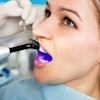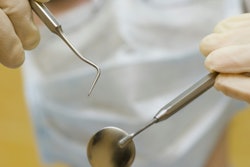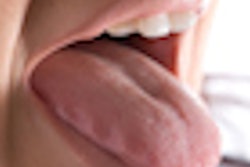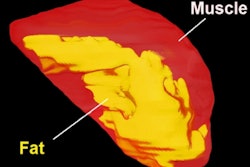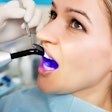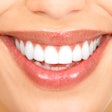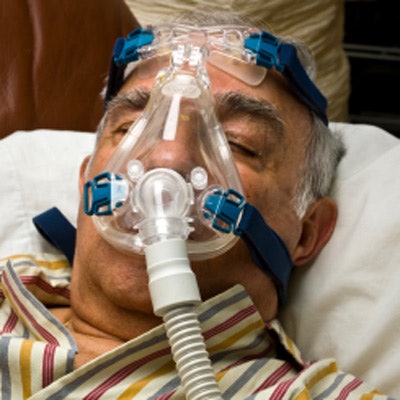

But Faulkenburg, 47, couldn't tolerate the CPAP machine her doctor prescribed.
"I just could not get used to the face mask covering both my nose and mouth," said Faulkenburg, who lives in Oviedo, FL. "It was claustrophobic."
CPAP, or continuous positive airway pressure, is often one of the first solutions doctors suggest for sleep apnea. With this disorder, a person's breathing stops and starts so frequently during the night that it can lead to or exacerbate health problems. The National Sleep Foundation estimates that more than 18 million American adults have sleep apnea.
A CPAP machine blows a stream of air into the back of the throat to let people breathe easier. It prevents muscles in the back of the throat from narrowing, which can constrict the airway, causing snoring or disturbed sleep.
Yet Faulkenburg quit using her CPAP and went back to feeling sleepy and tired all the time.
Many people have a negative reaction to the machines and are tempted to do the same. The big whoosh of air in your throat. The restrictive mask on your face. It can be a lot to adjust to. Studies suggest that from one-third to more than 50% of patients either stop using their CPAP machine or never bother to fill their prescription. They quit for a variety of reasons, but mostly because the device can be cumbersome and uncomfortable. Sometimes, they quit because of confusing or stringent health insurance restrictions.
But the health effects of untreated sleep apnea can be serious. People struggle with anxiety, tiredness, and low productivity. There's even an increased risk of high blood pressure, heart attack, and stroke.
Mary Mertens, a respiratory therapist at the Cleveland Clinic, helps patients work through problems with their CPAP machine. Patients often complain that the volume of air the machine puts out feels too intense.
"Think about it as sticking your head out of a car window with your mouth open at 60 mph versus 25 mph," Mertens said. "The high pressure can be very overwhelming."
So Mertens' team goes to people's homes to help troubleshoot problems. That includes explaining sleep apnea and how a CPAP can help.
"Picture the air passage at the back of their throat like a garden hose with no water in it. The hose collapses down," Mertens said. That's what happens when a person with sleep apnea is sleeping.
"When we put a CPAP on somebody, it's like turning the water on for the garden hose," she said. "The hose then pops open and stays open."
At the Cleveland Clinic, about 70% of patients in the Respiratory Home Care program keep using their CPAP, Mertens said.
Follow-up is key. Mertens' team checks in with patients during the first three to five days, again between 30 and 45 days, and again between 60 and 90 days.
Faulkenburg, the patient in Florida, first tried a CPAP 15 years ago but never checked back with her pulmonologist when she was struggling. And, she said, the physician never contacted her. Then several people in her social circle died in their sleep -- all of them right around her age. Those stories shook Faulkenburg, and she decided to try her CPAP again.
"I got a mask that covered just my nose, which let my mouth stay closed. That ended up being the whole issue," she said. "I sleep so good, I can't sleep without my CPAP now."
Dr. Indira Gurubhagavatula, a sleep medicine physician at the University of Pennsylvania Health System, said the look of the device alone can be alarming.
"One of the first things that I hear is that the thing itself is intimidating -- they see the tubing and mask and it's blowing air in their face -- they have real concerns: 'Am I actually going to sleep better with that thing?' " she said. "It is a big ask to go to bed with this thing strapped to their faces."
Gurubhagavatula said people who feel claustrophobic should wear their CPAP mask during the day while reading or watching TV. That can help the nerve endings in the face get used to the mask.
"It's just like breaking in new shoes or new jeans," Gurubhagavatula said. "Once it's broken in, it's less of an issue."
Pulmonologist James Rowley, a sleep medicine physician at Detroit Medical Center, said the air pressure from the CPAP can cause a runny nose, nasal congestion, or dry mouth. He said he can help by adjusting humidity settings on the machine or prescribing an antihistamine.
Medicare and private insurance companies require patients to use their CPAP very consistently -- often at least four hours every night and for 70% of nights each month. Sometimes the usage is monitored.
Patients who don't comply may end up paying out of pocket. That's the topic of this week's episode of the podcast "An Arm and a Leg." Kaiser Health News coproduces the podcast.
Prices vary, but a fully equipped machine typically costs from $500 to $3,000, with the national average around $850. After that initial investment, masks, hoses, and filters need to be replaced two or three times a year. And users have the ongoing cost of maintenance supplies -- wipes and brushes to keep the machine parts clean.
Gurubhagavatula said she has patients whose machines have been taken away because they couldn't follow the insurance company rules.
"They may have child care or elder responsibilities that makes their sleep disrupted. Or they sleep in chunks of time because they work certain shifts," she said. "The rule is arbitrary because using the machine, even if part time, is beneficial."
Nate Wymer, 44, said his machine is lying around his home somewhere in Holly Springs, NC. but he hasn't seen it in years.
"When I had the mask on I had to think about breathing out of my nose," Wymer said. "That's not something I normally do. After a couple of nights, I just couldn't do it."
"My doctor never really followed up from what I can remember, so I back-burnered it," Wymer said. "But, if you get in front of somebody, actually talk to them, and make sure everything is going OK, that would have been nice."
Copyright © 2019 Kaiser Health News. Licensed under CC BY-NC-ND 4.0.

